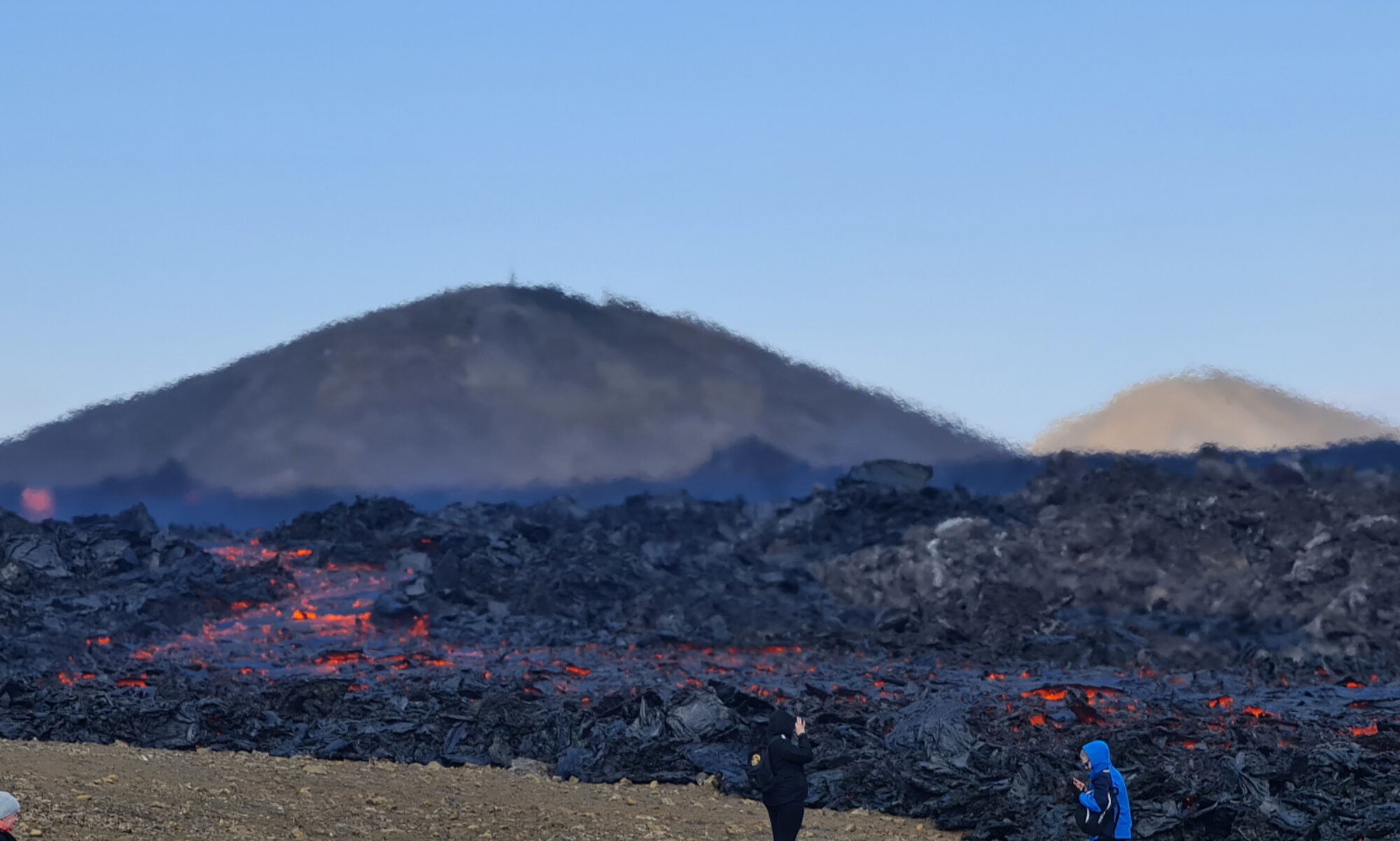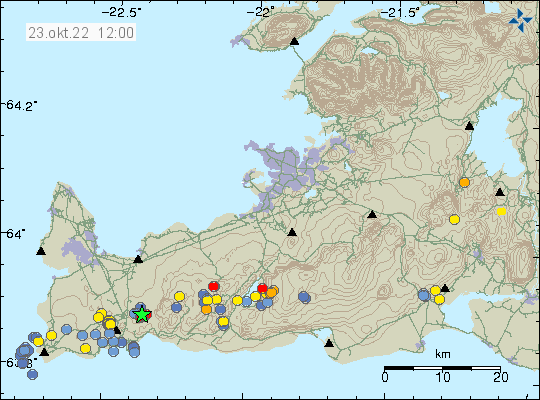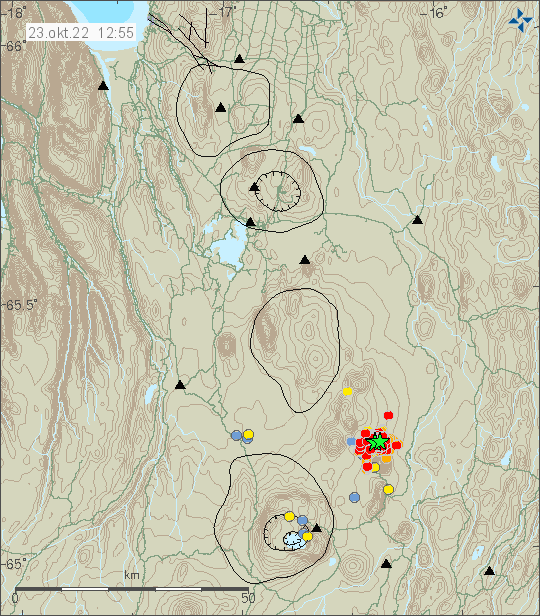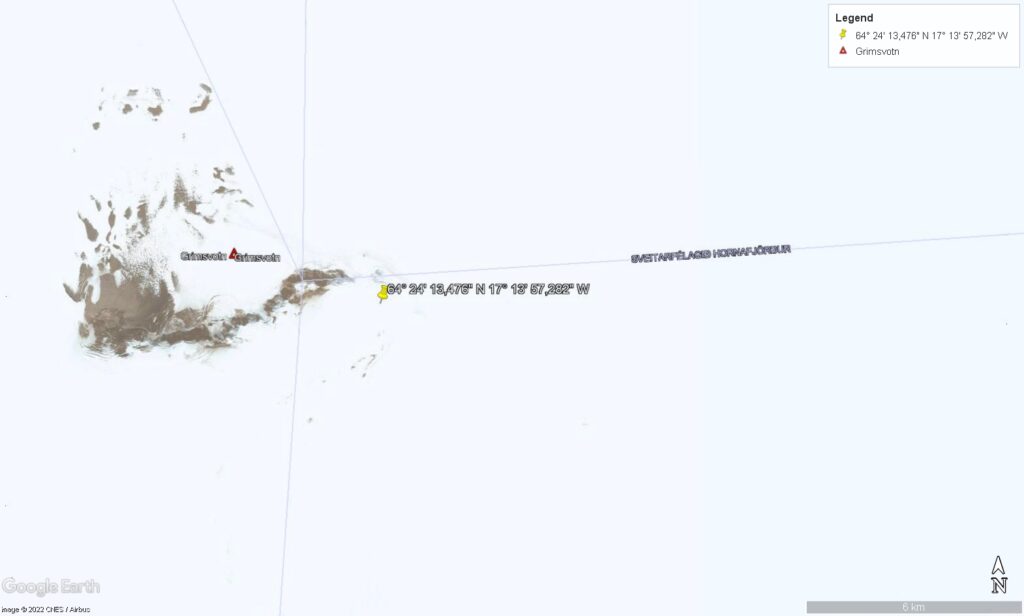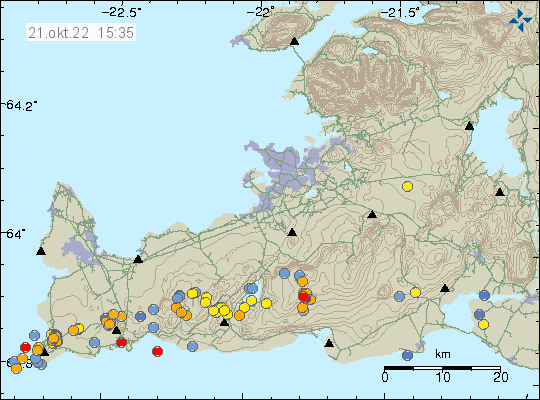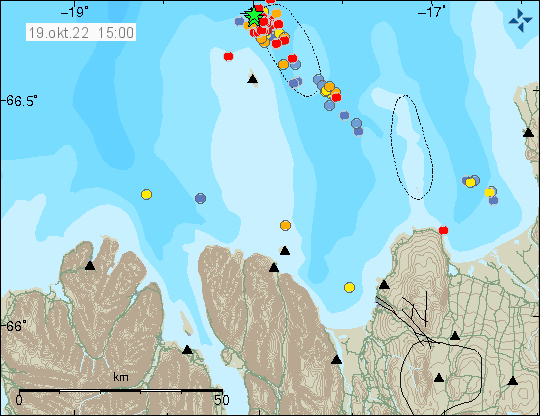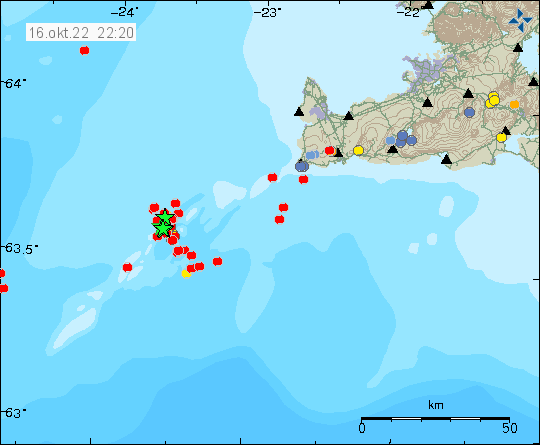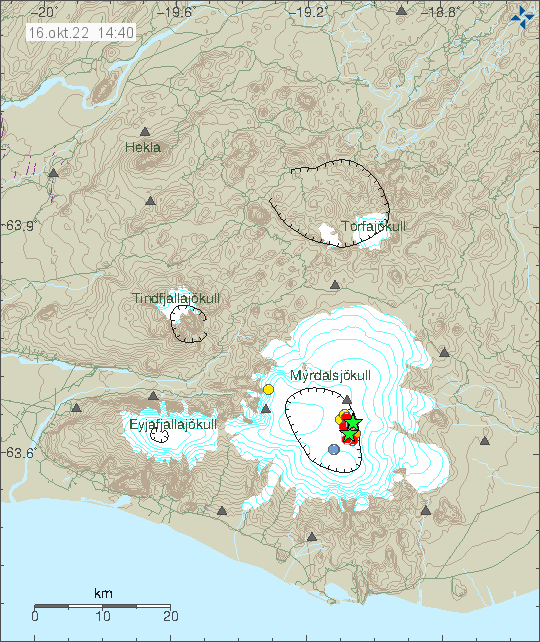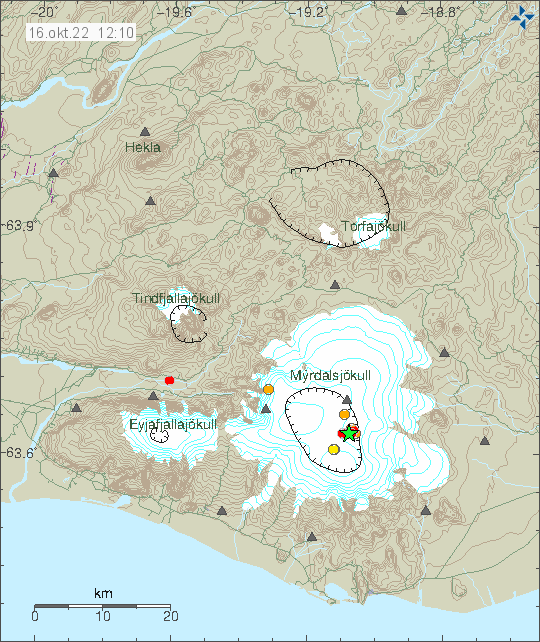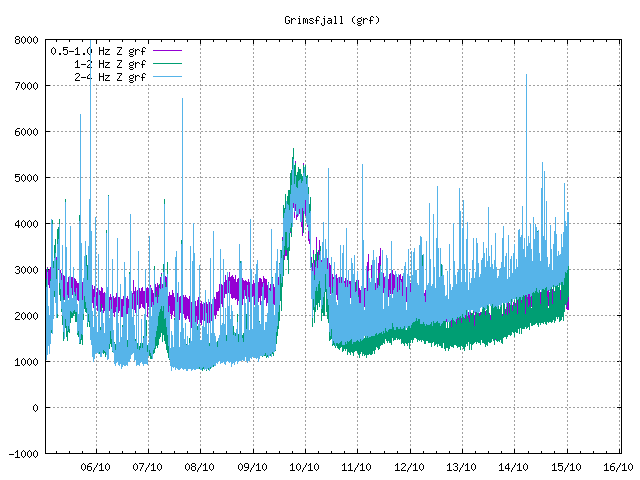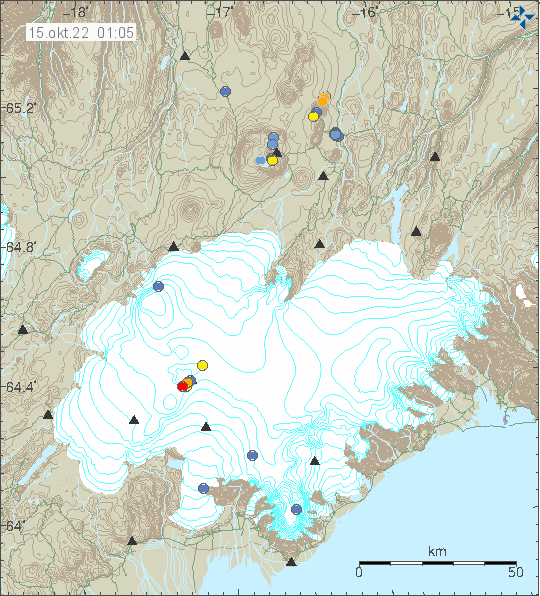This earthquake activity is ongoing at the writing of this article.
I normally don’t write article this late unless I think it is important.
This earthquake activity in Katla volcano seems to be at that nature that it is worth writing a short article about it this late. At 00:46 UTC an earthquake with magnitude of Mw3,6 (this is early reviewed earthquake magnitude, it might change when reviewed later tomorrow at Icelandic Met Office). Few smaller earthquakes have happened following this earthquake. Currently the earthquake activity is slow and it is possible that nothing more might happen.
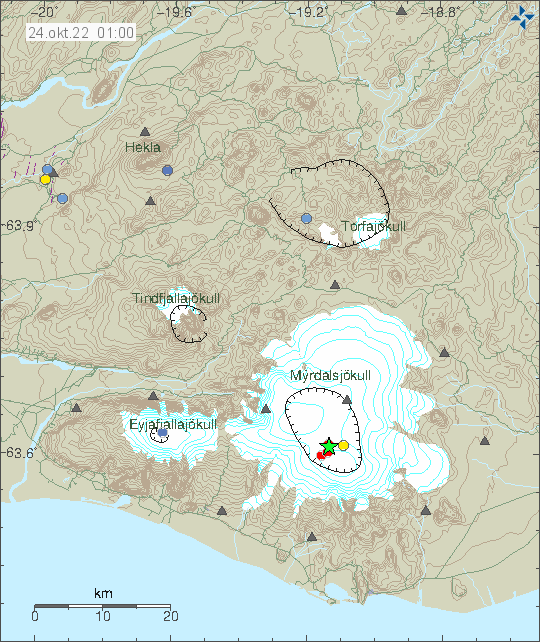
I don’t know if this is a sign of an eruption that is going to happen or if this is just an earthquake activity that happens regularly in Katla volcano. There are now 104 years since last major eruption in Katla volcano and the situation is unclear on what is going on. If anything more happens I am going to write an update tomorrow. There’s a good chance nothing more might happen, but it is worth keeping a watch out for this if anything changes suddenly.
